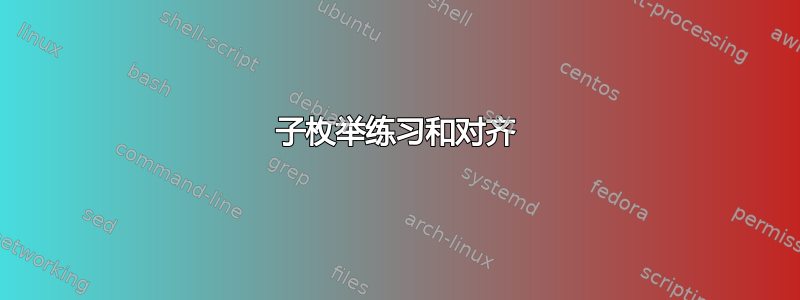
我有以下内容:
\documentclass[12pt]{article}
\usepackage[margin=1in]{geometry}
\usepackage{amsmath,amsthm,amssymb}
\newcommand{\N}{\mathbb{N}}
\newcommand{\Z}{\mathbb{Z}}
\newenvironment{theorem}[2][Theorem]{\begin{trivlist}
\item[\hskip \labelsep {\bfseries #1}\hskip \labelsep {\bfseries #2.}]}{\end{trivlist}}
\newenvironment{lemma}[2][Lemma]{\begin{trivlist}
\item[\hskip \labelsep {\bfseries #1}\hskip \labelsep {\bfseries #2.}]}{\end{trivlist}}
\newenvironment{exercise}[2][Exercise]{\begin{trivlist}
\item[\hskip \labelsep {\bfseries #1}\hskip \labelsep {\bfseries #2.}]}{\end{trivlist}}
\newenvironment{reflection}[2][Reflection]{\begin{trivlist}
\item[\hskip \labelsep {\bfseries #1}\hskip \labelsep {\bfseries #2.}]}{\end{trivlist}}
\newenvironment{proposition}[2][Proposition]{\begin{trivlist}
\item[\hskip \labelsep {\bfseries #1}\hskip \labelsep {\bfseries #2.}]}{\end{trivlist}}
\newenvironment{corollary}[2][Corollary]{\begin{trivlist}
\item[\hskip \labelsep {\bfseries #1}\hskip \labelsep {\bfseries #2.}]}{\end{trivlist}}
\begin{document}
\title{xxx}%replace X with the appropriate number
\author{xxx\\ %replace with your name
xxx} %if necessary, replace with your course title
\maketitle
\begin{exercise}{1} Consider the PDE \[ u_{xx} - 2u_{xy} - 3u_{yy} = 0 \]
\end{exercise}
(i) Show that this PDE is hyperbolic. \\
%Note 1: The * tells LaTeX not to number the lines. If you remove the *, be sure to remove it below, too.
%Note 2: Inside the align environment, you do not want to use $-signs. The reason for this is that this is already a math environment. This is why we have to include \text{} around any text inside the align environment.
A second-order linear PDE in two variables is an equation of the form
\begin{align*}
Au_{xx} + Bu_{xy} + Cu_{yy} + Du_{x} + Eu_{y} + Fu = G,
\end{align*}
where $A, B, C, D, E, F,$ and $G$ can be constants or given functions of $x$ and $y$.
\end{document}
我希望能够将我的练习细分为 (i)、(ii)、(iii) 等。然后我希望能够按照 (i)、(ii) 等的对齐方式编写我的解决方案,而不会出现文本错位的情况,如上例所示(见下图)。因此,与练习 1 相关的所有工作都整齐地归入练习 1 的对齐方式,练习 1 (i) 对齐方式下的所有工作都整齐地归入练习 1 (i) 的对齐方式,等等。
错位:
在上图中,Exercise 1应排在最前面,然后(i)排在第二位,并对齐到其下方。然后其他所有内容都应对齐到其下方(i)。
谢谢。
答案1
这是你想要的吗?我使用了一个真正的枚举列表,用包定制enumitem。两种可能性:第一种是默认的,标签在列表的左边距右对齐,第二种是自定义的,标签在其框中左对齐:
\documentclass[12pt]{article}
\usepackage[margin=1in, showframe]{geometry}
\usepackage{amsmath,amsthm,amssymb}
\newcommand{\N}{\mathbb{N}}
\newcommand{\Z}{\mathbb{Z}}
\newenvironment{theorem}[2][Theorem]{\begin{trivlist}
\item[\hskip \labelsep {\bfseries #1}\hskip \labelsep {\bfseries #2.}]}{\end{trivlist}}
\newenvironment{lemma}[2][Lemma]{\begin{trivlist}
\item[\hskip \labelsep {\bfseries #1}\hskip \labelsep {\bfseries #2.}]}{\end{trivlist}}
\newenvironment{exercise}[2][Exercise]{\begin{trivlist}
\item[\hskip \labelsep {\bfseries #1}\hskip \labelsep {\bfseries #2.}]}{\end{trivlist}}
\newenvironment{reflection}[2][Reflection]{\begin{trivlist}
\item[\hskip \labelsep {\bfseries #1}\hskip \labelsep {\bfseries #2.}]}{\end{trivlist}}
\newenvironment{proposition}[2][Proposition]{\begin{trivlist}
\item[\hskip \labelsep {\bfseries #1}\hskip \labelsep {\bfseries #2.}]}{\end{trivlist}}
\newenvironment{corollary}[2][Corollary]{\begin{trivlist}
\item[\hskip \labelsep {\bfseries #1}\hskip \labelsep {\bfseries #2.}]}{\end{trivlist}}
\usepackage{enumitem}
\begin{document}
\title{xxx}%replace X with the appropriate number
\author{xxx\\ %replace with your name
xxx} %if necessary, replace with your course title
\maketitle
\begin{exercise}{1} Consider the PDE \[ u_{xx} - 2u_{xy} - 3u_{yy} = 0 \]
\end{exercise}
\begin{enumerate}[label=(\roman*), leftmargin=*, listparindent=0pt]
\item Show that this PDE is hyperbolic.
%Note 1: The * tells LaTeX not to number the lines. If you remove the *, be sure to remove it below, too.
%Note 2: Inside the align environment, you do not want to use $-signs. The reason for this is that this is already a math environment. This is why we have to include \text{} around any text inside the align environment.
A second-order linear PDE in two variables is an equation of the form
\begin{align*}
Au_{xx} + Bu_{xy} + Cu_{yy} + Du_{x} + Eu_{y} + Fu = G,
\end{align*}
where $A, B, C, D, E, F,$ and $G$ can be constants or given functions of $x$ and $y$.
\item
\end{enumerate}
\vspace{4ex}
\begin{enumerate}[label=(\roman*), wide=2.5em, leftmargin=*, labelsep =-0.5em, listparindent=0pt]
\item Show that this PDE is hyperbolic.
%Note 1: The * tells LaTeX not to number the lines. If you remove the *, be sure to remove it below, too.
%Note 2: Inside the align environment, you do not want to use $-signs. The reason for this is that this is already a math environment. This is why we have to include \text{} around any text inside the align environment.
A second-order linear PDE in two variables is an equation of the form
\begin{align*}
Au_{xx} + Bu_{xy} + Cu_{yy} + Du_{x} + Eu_{y} + Fu = G,
\end{align*}
where $A, B, C, D, E, F,$ and $G$ can be constants or given functions of $x$ and $y$.
\item
\end{enumerate}
\end{document}




